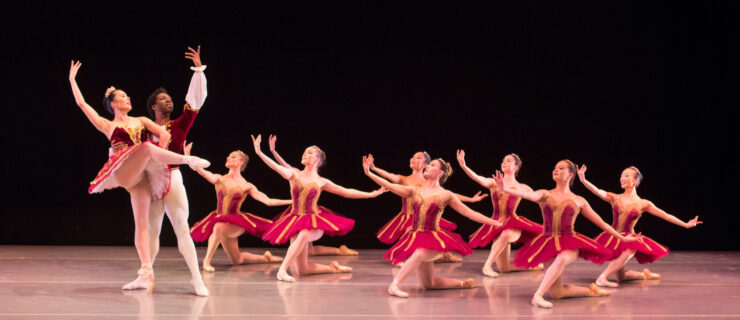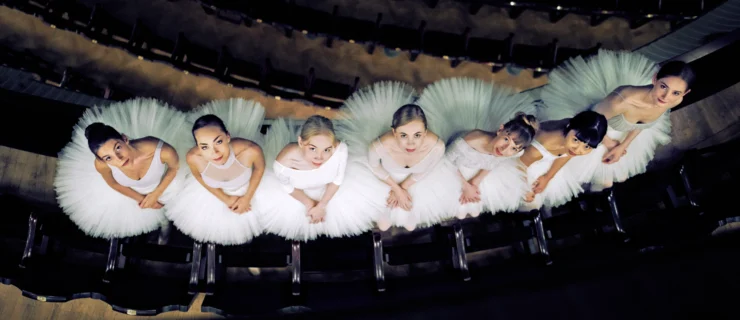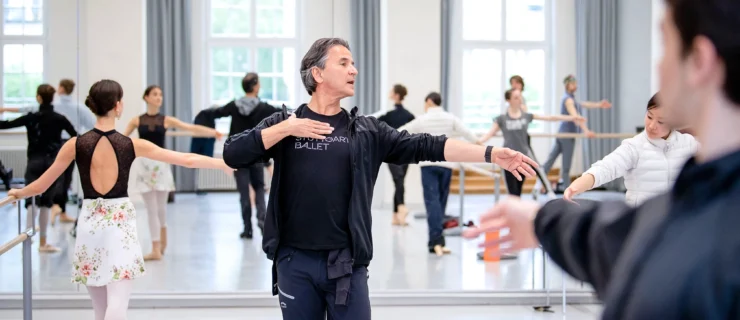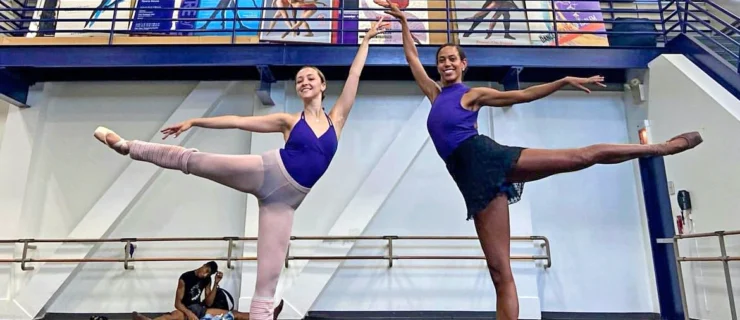A History of Firsts
The year was 1933. President Franklin D. Roosevelt had just been inaugurated. It was the middle of the Great Depression, and the Golden Gate Bridge had yet to be built. But that’s when America got its first ballet company. Until then, ballet in San Francisco meant studio performances and bits and pieces of 19th-century repertoire by visiting European troupes, most notably Anna Pavlova’s.
Few thought that ballet could be contemporary, resident—or American. Yet that’s exactly what choreographer Adolphe Bolm, a former partner of Pavlova and a member of Diaghilev’s Ballets Russes, had in mind. The San Francisco Opera had hired him to train dancers for the operas that required them. Within a year, the San Francisco Opera Ballet, as it was known until 1942, when it became an independent entity, gave its first concert. The biggest hit in the all-Bolm program on June 2, 1933, was Ballet mécanique, an avant-garde take on the machine age, originally choreographed for the John Barrymore film The Mad Genius.
After Bolm’s departure, the Opera hired Willam Christensen as a dancer. In 1937, he became the company’s first artistic director, and with that, the Christensen era, which lasted until 1984, started. Willam, the oldest of three Utah-raised dancer brothers, was an ambitious, gifted performer and choreographer. His brother Harold, married to dancer Ruby Asquith, eventually took on administrative duties and directed the San Francisco Ballet School until his retirement in 1975. Youngest brother Lew, married to ballerina Gisella Caccialanza, is considered the first American-born classical male dancer. He pitched in when necessary, but primarily pursued a career with George Balanchine’s various companies. He took over as artistic director in 1951, when Willam moved back to Utah to create Ballet West.
During the early years, SFOB continued its bread-and-butter job with the Opera, for which dancers got paid $25 a week, out of which they had to buy their own pointe shoes. But the company also toured the West Coast with a repertoire that consisted of Willam’s choreography, which favored narrative ballets, often with a comedic intent. When a spot opened up during the Opera season in 1939, he choreographed the company’s first full-length ballet, Coppélia. The following year, he created a full-length Swan Lake, the first ever in the country. He double-cast the Odile/Odette role, explaining later that he hadn’t known that the roles were supposed to be danced by one ballerina.
December 29, 1944—toward the end of World War II—brought another American first, a full-length Nutcracker. Over the years, Willam had heard Russian émigrés reminisce about a wonderful ballet with a growing Christmas tree at the Maryinsky Theater. Disney’s 1940 Fantasia had popularized the music. When Balanchine and Alexandra Danilova came through town with de Basil’s Ballets Russes, they filled in Willam with additional details. Because there was wartime rationing, dancers pitched in with their textile coupons for the costumes. The men wore splendid red jackets—made out of a discarded theater curtain acquired for $10. Caccialanza danced the Sugar Plum Fairy, Harold her cavalier. Nineteen-year old Jocelyn Vollmar, who as a student had also performed in Coppélia and Swan Lake, danced the Snow Queen. “We were blissfully ignorant of making history,” says Vollmar. “All we wanted to do was dance.”
Young dancers’ desire to perform as much as possible would prove a challenge for many years to come. While its reputation grew and its school turned out excellently trained dancers, SFB could not offer them enough employment. Again and again, dancers—Cynthia Gregory, Sean Lavery and Ricardo Bustamante among them—left for opportunities elsewhere. Vollmar did too. Eventually she returned and taught at SFB until retiring in 2003.
During his tenure at SFB, Lew Christensen proved to be a refined and highly musical choreographer of both narrative and abstract ballets. He had brought with him an affinity for and understanding of Balanchine’s choreography. In his first year, he set his own Filling Station, the first classical ballet with an American theme, which Ballet Caravan had premiered in 1938. The following season, in 1952, he introduced Serenade, the first of many Balanchine ballets that SFB was to acquire.
Even though SFB gained international acclaim in State Department–sponsored tours to Asia, Latin America and the Middle East, the financial struggle continued. In 1974, the company faced bankruptcy. It was saved by the dancers; they took their S.O.B. (Save Our Ballet) campaign to the streets. “We danced everywhere and anywhere,” Vollmar recalls.
The energetic and flamboyant Michael Smuin, who had become co-director in 1976, choreographed works that brought in bigger and younger audiences. In 1983, just in time for its 50th birthday, SFB opened a new state-of-the-art facility across the street from the War Memorial Opera House. Lew died in 1984, and the Christensen era ended. The Helgi Tomasson era began in 1985, and initiated a whole new round of firsts, as well as successes.
Rita Felciano is the dance critic for the San Francisco Bay Guardian and Bay Area correspondent for Dance View Magazine.





